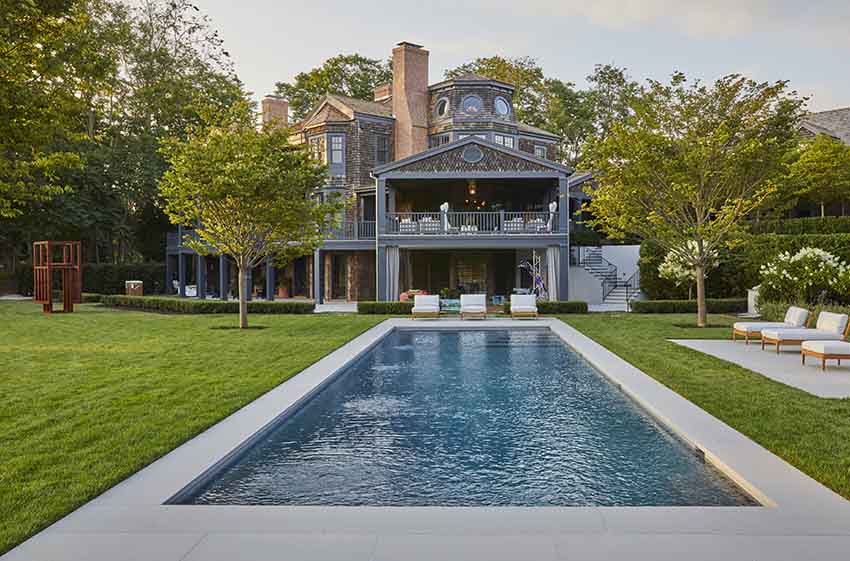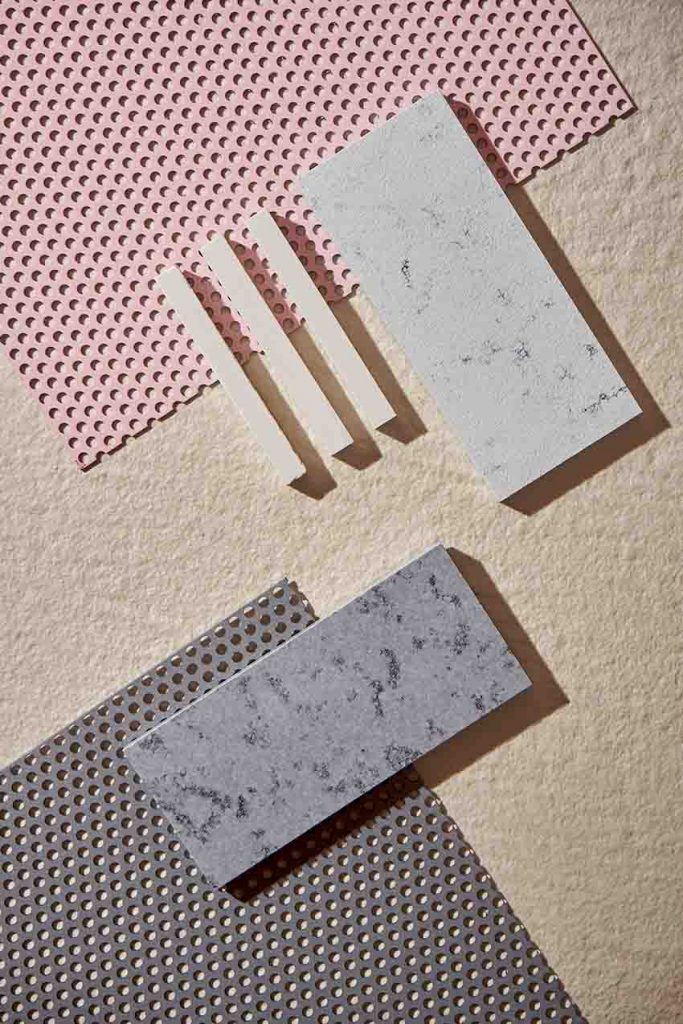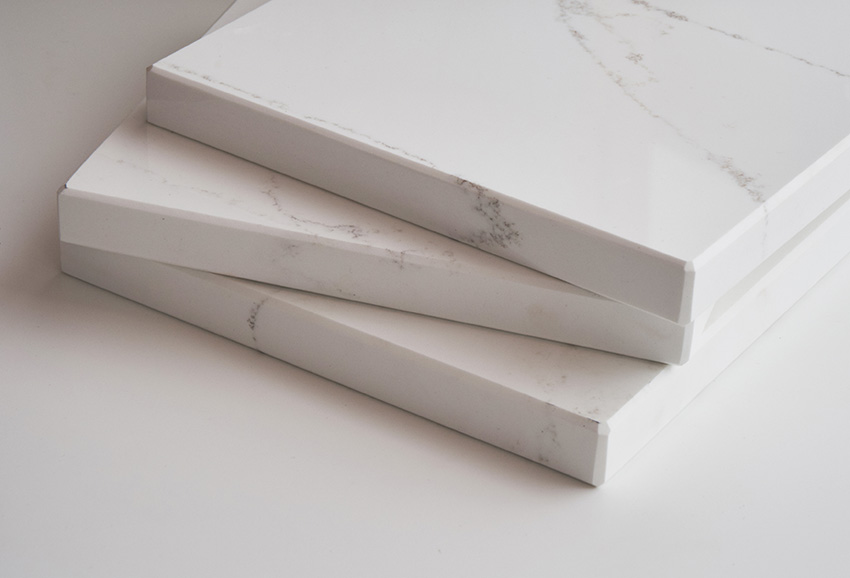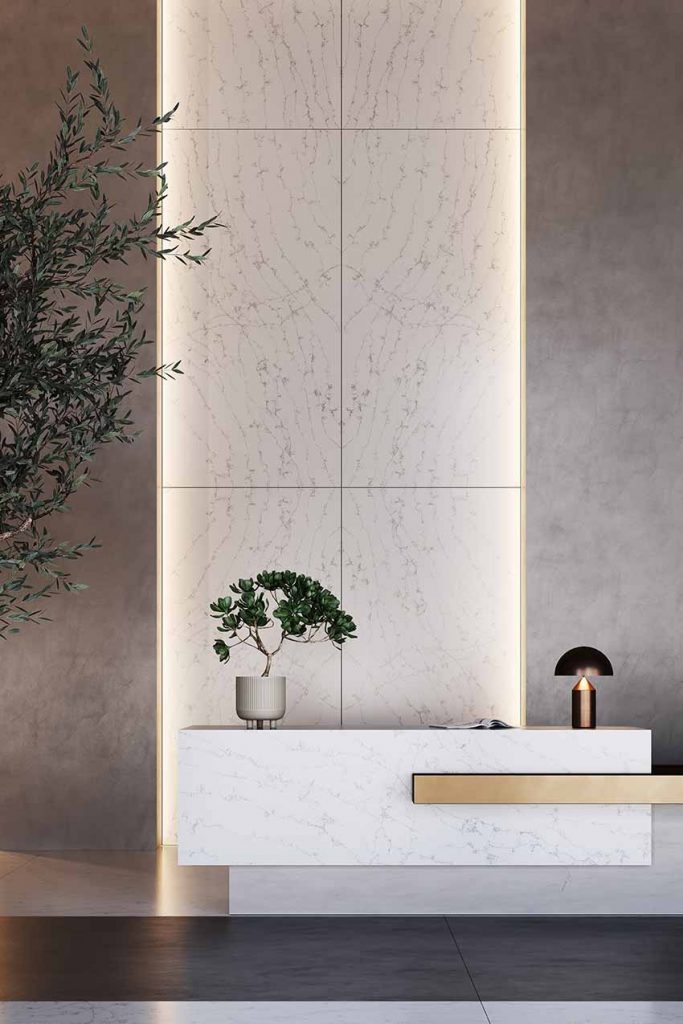Lapitec was born in 1989 from the experience of Breton, a manufacturer of machines and plants for processing stone material with 6 branches worldwide and over 900 employees. Lapitec produces the homonymous material, covered by over 25 international patents and made from 100% natural mineral powder. This special mixture, free of toxins and petroleum derivatives, is subjected to a sintering and vacuum vibro-compression process without the use of glues or resins, resulting in slabs that are ultra-resistant, non-porous on the surface and full-body, therefore identical throughout their thickness in terms of structure, colour and texture. Lapitec sintered stone is currently a unique material in the world because of its natural composition and the patented process by which it is made.
Interview with Michela Callegari, Country Manager at Lapitec Spa.
Easy Engineering: What are the main areas of activity of the company?
Michela Callegari: The material’s technical characteristics as well its processing and expression possibilities make it ideal for use in the construction sector (building and architecture), and in the design sector, intended both as interior design (for indoor and outdoor horizontal and vertical surfaces, including facades or for swimming pools and spas), and product design (from kitchen tops to furnishing accessories). Lapitec is a versatile material with the appeal and materiality of natural stone, but with the characteristics of ceramics, from scratch resistance to resistance to temperature changes, extreme temperatures, water, chemical agents, UV radiation, weathering, time, etc.

E.E: What’s the news about new products?
M.C: Every day we work with our team of engineers, chemists and other professionals to create new colours without using inks or toxic materials, and this is a major challenge. We don’t just focus on the aesthetic aspect in our research, we constantly try to go further with the formula itself. Since 2022, Lapitec is officially and proudly silica-free. This substance, harmful to man when inhaled in powder form, is naturally present in all ceramics (around 15%), granite (from 50-85%) and quartz agglomerates, which in some cases can reach 90%.
E.E: What are the ranges of products?
M.C: Lapitec is sold in various formats, the most common being the XXL slab measuring 1500 x 3365 mm. It is available in three thicknesses, 12, 20 and 30 mm, 18 nuances (solid colour or with irregular veining) and 7 different surface roughnesses, from smooth satin and polished, up to the roughness levels with a high slip coefficient which are particularly suitable for outdoor environments and for paving poolsides and wellness areas.

E.E: At what stage is the market where you are currently active?
M.C: The kitchen sector was immediately receptive to the potential and quality of our material and today a substantial part of our global turnover comes from close collaborations with kitchen companies and custom projects. The architectural segment of large-scale design has seen strong growth and is becoming increasingly relevant and important. Our material is perfect for the design of ventilated facades, but also for coverings or for paving large areas or swimming pools. The naval sector is still important and we will certainly try to develop it further, having already delivered some major projects.
E.E: What can you tell us about market trends?
M.C: Today’s global market is paying attention to two factors above all others: sustainability and health. Lapitec fully meets both requirements, so we are growing steadily on all continents. There are clearly variations in terms of trends and certifications, but there’s nothing that substantially affects the results.

E.E: What are the most innovative products marketed?
M.C: We recently unveiled a completely hidden under-top induction unit. It is activated by a silicone pad that we developed with a prestigious Italian university, and which activates the circuit only when correctly positioned on the hob. In this way, when not in use, it is impossible to activate the hob by accident and the surface can be used to prepare dishes and plate up, but also to play, study and work.
This is an example of how technology can embrace our material and that the market is responding in the best possible way.

E.E: What estimations do you have for 2022?
M.C: There is a major project underway to expand our production facility due to the exponential growth in orders in recent years. Some overseas markets like the United States and Australia have seen great growth, but we remain focused on Europe, which obviously makes up a significant part of our turnover. Romania is a very interesting market where particular attention is paid to the performance of the surfaces and their flexibility of application. We are working well with Art Granit, our local distributor there, so we are very confident in this market.

